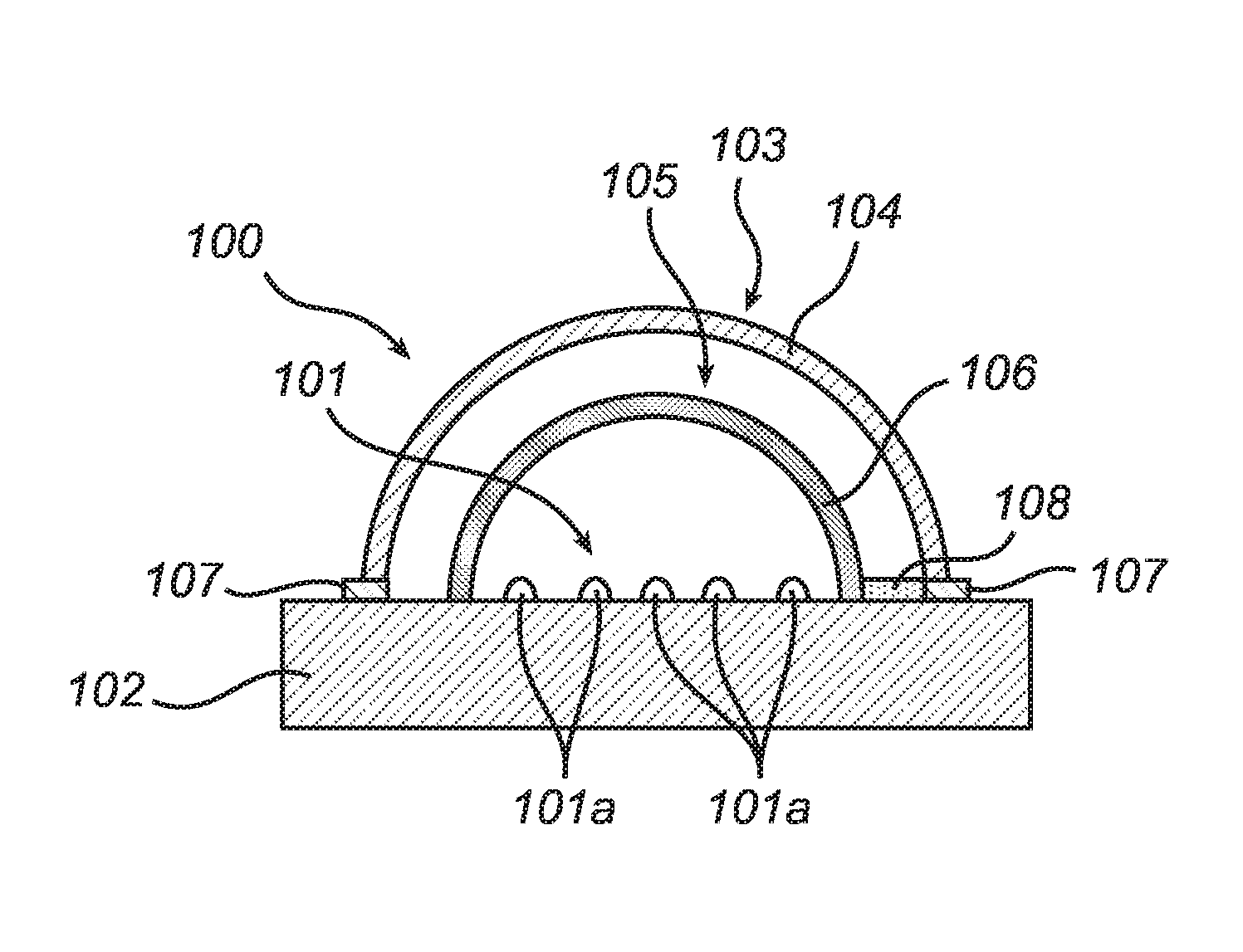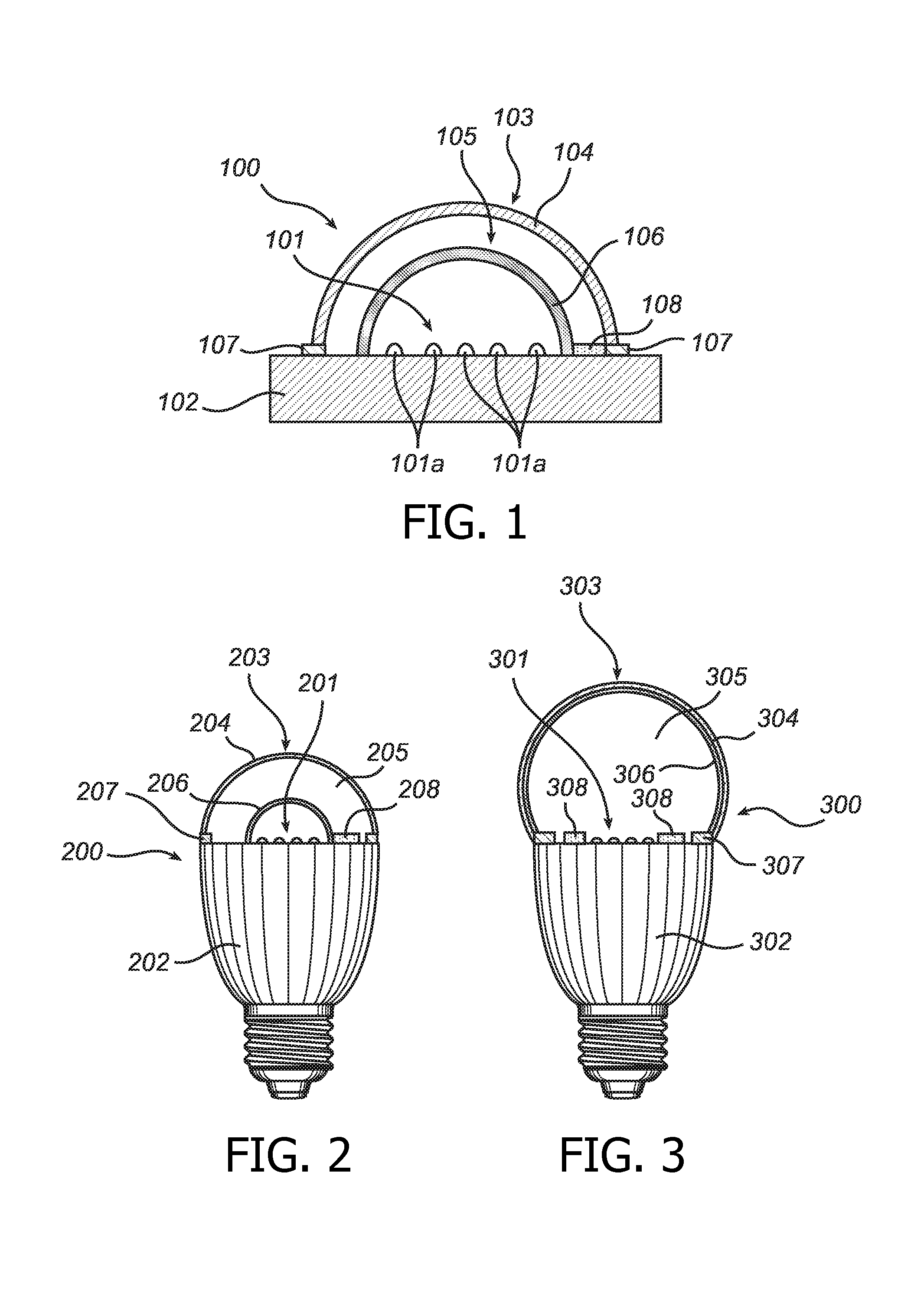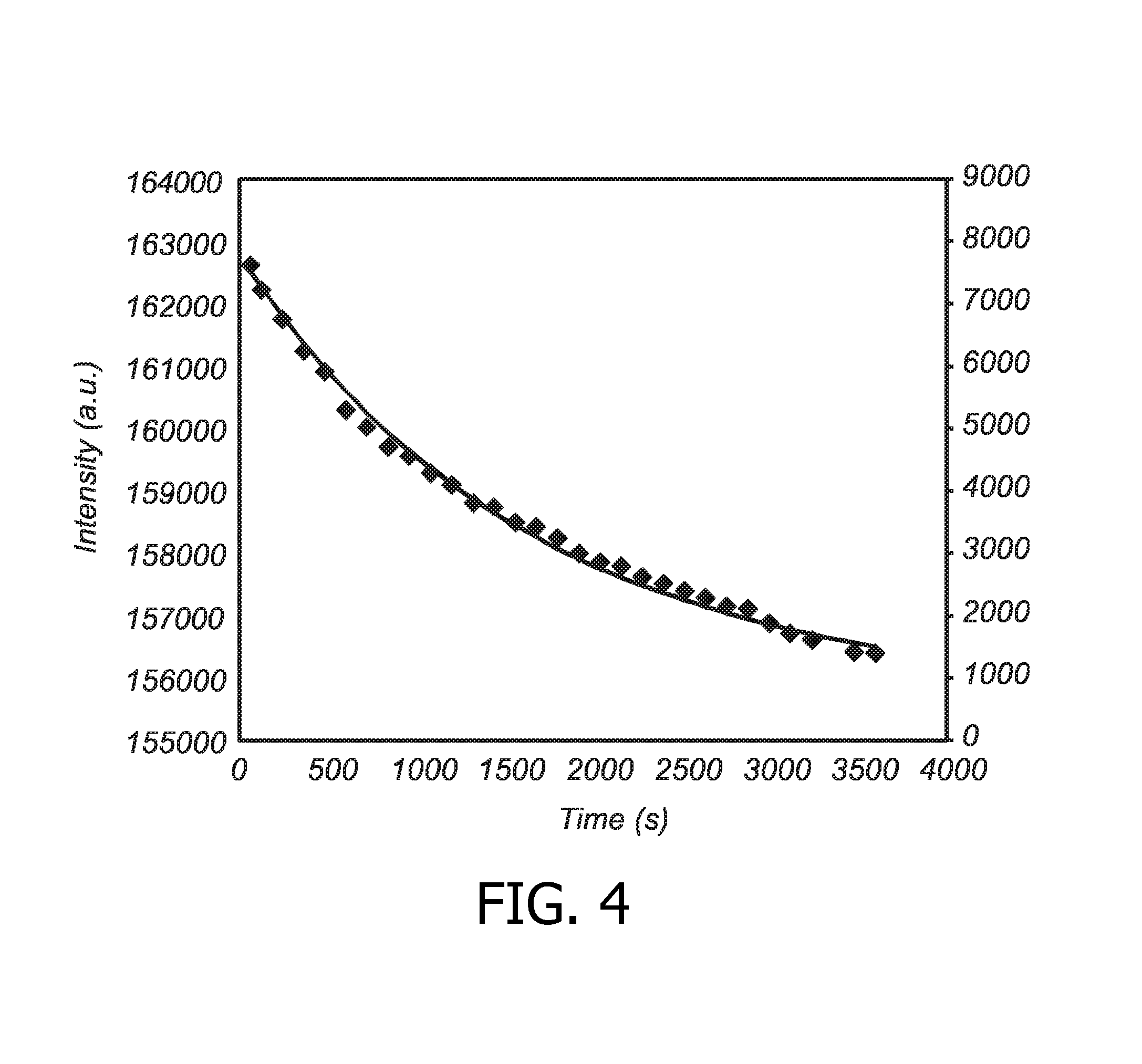Light-emitting arrangement
a technology of light-emitting arrangements and light-emitting phosphors, which is applied in the direction of semiconductor devices for light sources, point-like light sources, lighting and heating apparatus, etc., can solve the problems of additional efficiency loss, loss of device efficiency, and inorganic phosphors suffering from the disadvantage of being relatively expensive, so as to improve the control of the environment
- Summary
- Abstract
- Description
- Claims
- Application Information
AI Technical Summary
Benefits of technology
Problems solved by technology
Method used
Image
Examples
Embodiment Construction
[0026]In FIG. 1 an embodiment of the light emitting arrangement 100 is shown in a cross-sectional view and seen from the side. The light emitting arrangement 100 comprises a sealing structure 103, which encloses a cavity 105, and which comprises a base part 102 and a light outlet member 104. Within the cavity, attached to the base part 102, is arranged a light source 101 comprising a plurality of LEDs 101a. The light outlet member 104 is attached to the base part 102 by means of a seal 107 arranged to seal the cavity 105. The arrangement 100 further comprises a remote wavelength converting member 106, which is attached to the base part 102 in the cavity 105 and arranged to receive light emitted by the LEDs. A getter 108 is arranged on the base part 102 within the cavity 105. The base part 102 further comprises or supports for instance electrical terminals and drive electronics, as understood by the person skilled in the art, although not explicitly shown.
[0027]The wavelength convert...
PUM
 Login to View More
Login to View More Abstract
Description
Claims
Application Information
 Login to View More
Login to View More - R&D
- Intellectual Property
- Life Sciences
- Materials
- Tech Scout
- Unparalleled Data Quality
- Higher Quality Content
- 60% Fewer Hallucinations
Browse by: Latest US Patents, China's latest patents, Technical Efficacy Thesaurus, Application Domain, Technology Topic, Popular Technical Reports.
© 2025 PatSnap. All rights reserved.Legal|Privacy policy|Modern Slavery Act Transparency Statement|Sitemap|About US| Contact US: help@patsnap.com



